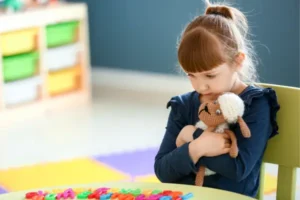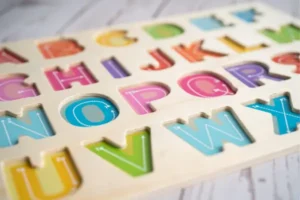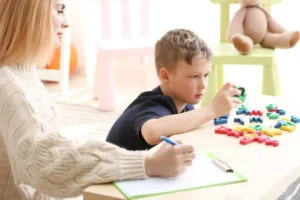Autism spectrum disorder (ASD) is a developmental condition that affects how children communicate, interact, and process information. One of the most significant challenges children with autism face is language development. This can range from delayed speech and limited vocabulary to difficulty with social communication and understanding non-verbal cues.
The purpose of this article is to explore how educational toys can play a vital role in supporting language development for children with autism. By engaging children in fun and interactive ways, these toys help build essential language skills, such as vocabulary, sentence structure, and social communication.
Language development is crucial for all children, but for those with autism, it is even more essential. Strong language skills improve a child’s ability to express their needs, connect with others, and succeed academically. Educational toys provide valuable tools to promote these skills, helping children communicate more effectively and confidently.
Understanding Language Development in Autistic Kids
Language Challenges in Autism
Children with autism often face a variety of speech and language difficulties. These can include delayed speech, difficulty forming sentences, challenges with understanding and using social cues, and limited vocabulary. In many cases, children with autism may struggle to initiate or maintain conversations, making communication a significant hurdle.
Variability in Development
One of the key aspects of autism is the wide range of language abilities among children. While some children may be non-verbal or have minimal speech, others may develop strong verbal skills, though they might still face challenges in using language appropriately in social contexts. This variability means that each child’s language development journey is unique, requiring tailored support to meet their individual needs.
Importance of Early Intervention
Early intervention is critical when it comes to language development in children with autism. The earlier a child is exposed to language-building tools—such as educational toys designed to encourage communication—the greater the potential for improvement. These tools provide structured, repetitive, and interactive opportunities that can help children build vocabulary, understand social cues, and practice language in a safe and supportive environment. Early, consistent support helps lay a solid foundation for language skills that will benefit children throughout their lives.
How Educational Toys Can Help Support Language Development
Sensory Toys and Language
Sensory-rich toys—such as those with varied textures, sounds, or visual stimuli—play a key role in helping children with autism process language. These toys engage multiple senses at once, which can enhance a child’s ability to focus and respond to language cues. For example, toys that make sounds or light up can help children associate words with sensory experiences, reinforcing vocabulary and comprehension.
Interactive Toys for Conversation Practice
Interactive toys, such as talking dolls, electronic books, or learning systems, are excellent for encouraging back-and-forth communication. These toys prompt children to respond to questions, follow instructions, and engage in simple conversations. By providing immediate feedback, interactive toys help children practice speech and social interaction in a fun, low-pressure way.
Imaginative Play Toys
Pretend play toys, like dolls, action figures, or playsets, are great tools for language development. When children engage in pretend play, they practice using new vocabulary, forming sentences, and understanding social roles. This type of play also helps children develop storytelling skills and use language creatively, which is essential for building social language and communication skills.
Repetitive and Structured Toys
Toys that involve repetition and structure, such as puzzles or matching games, provide a predictable and engaging way for children to learn language. These toys often involve clear instructions and consistent patterns, helping children with autism grasp concepts like sequencing, categorization, and word associations. The repetitive nature of these toys reinforces language skills, making them ideal for children who benefit from structured learning environments.
Choosing the Right Educational Toy for Language Development in Autistic Kids
Consider Sensory Preferences
When selecting educational toys for children with autism, it’s important to consider their sensory preferences. Some children may respond better to tactile toys (those with different textures), auditory toys (those that make sounds or music), or visual toys (such as those with bright colors or lights). Matching toys to a child’s sensory needs can help create a more engaging and comfortable learning experience, making it easier for them to focus on language development.
Assess the Child’s Communication Level
It’s essential to tailor toys to the child’s current language abilities. For early learners, choose toys that help with basic word recognition, such as toys with letters, numbers, or simple pictures. For children with more advanced communication skills, look for toys that promote more complex conversations and social interactions, like those that encourage storytelling or word-building games.
Incorporate Adult Interaction
While educational toys can be a great tool for language development, adult involvement is key. Caregivers, parents, and teachers can guide the child’s play, model language use, and provide positive reinforcement. Playing together not only makes learning more engaging, but also helps children understand how language is used in real-life social interactions.
Look for Versatility and Growth Potential
Choose toys that can grow with the child’s development. Some toys are designed with different difficulty levels or multiple features, allowing children to engage with them at different stages of language development. Toys that can be adapted over time ensure continued language support, helping children progress as their communication skills improve.
Top Educational Toys to Support Language Development in Autistic Kids
1. LeapFrog LeapStart Learning System
The LeapFrog LeapStart Learning System is an interactive, touch-and-talk learning toy designed to engage children in a variety of educational activities, including language development. The toy uses a stylus to interact with colorful activity books, teaching children letters, words, and simple phrases through fun, interactive content.
Key Features: Interactive sound, touch-sensitive technology, and age-appropriate books.
Language Benefits: Enhances vocabulary, comprehension, and sentence structure through repetition and engagement.
Age Range: 2-7 years.
2. VTech Touch and Learn Activity Desk
This versatile desk features a range of interactive activities focused on language, numbers, music, and more. Children can explore letters, words, and simple sentences through the desk’s engaging buttons and light-up features. It encourages children to recognize words, learn letter sounds, and practice speech in a playful environment.
Key Features: Talking buttons, alphabet recognition, and interactive lessons.
Language Benefits: Supports early language skills, such as letter recognition, word association, and sentence formation.
Age Range: 2-5 years.
3. Fisher-Price Laugh & Learn Smart Stages Puppy
The Fisher-Price Smart Stages Puppy is a cuddly toy that introduces children to language through interactive songs, phrases, and sounds. As children engage with the toy, they learn basic vocabulary, colors, and shapes, with the content adapting to their developmental stage.
Key Features: Visual and auditory stimulation, adjustable learning stages, and interactive voice prompts.
Language Benefits: Encourages verbal communication through songs and phrases, helping children build vocabulary and improve comprehension.
Age Range: 6 months – 3 years.
These educational toys provide interactive and engaging ways to support language development in children with autism. By combining sensory stimulation, structured learning, and social interaction, these toys offer valuable tools to help children improve their communication skills.
Additional Tips for Enhancing Language Development Through Play
Create a Language-rich Environment
Parents and caregivers can foster language development by creating a language-rich environment at home. Surround children with toys, books, and everyday objects that encourage communication. For example, reading books together, labeling items around the house, and using descriptive language during routine activities can help reinforce vocabulary and comprehension.
Encourage Play and Interaction
Actively engaging children with autism in play is key to language development. Encourage them to use words during playtime by modeling language, asking open-ended questions, and prompting them to describe their actions or express their thoughts. Play can also be an opportunity for socialization, where children practice taking turns, sharing, and initiating conversations.
Incorporate Real-life Context
Using real-life activities, like cooking, shopping, or going for a walk, alongside educational toys can further enhance language learning. These everyday situations provide natural opportunities to introduce new vocabulary and practice communication skills. For example, naming ingredients while cooking or discussing the items on a shopping list helps connect language to the world around the child, making it more meaningful and practical.
Conclusion
In summary, educational toys play a crucial role in supporting language development in children with autism. By offering sensory engagement, promoting interactive communication, encouraging imaginative play, and reinforcing repetition and structure, these toys provide valuable tools for improving vocabulary, social interaction, and speech skills.
We encourage parents and caregivers to explore a variety of educational toys tailored to their child’s unique needs and developmental stage. With the right tools and consistent support, children with autism can make meaningful strides in their language development.
We’d love to hear from you! Share your experiences with educational toys or let us know if you have any recommendations that have helped support language development in children with autism.




